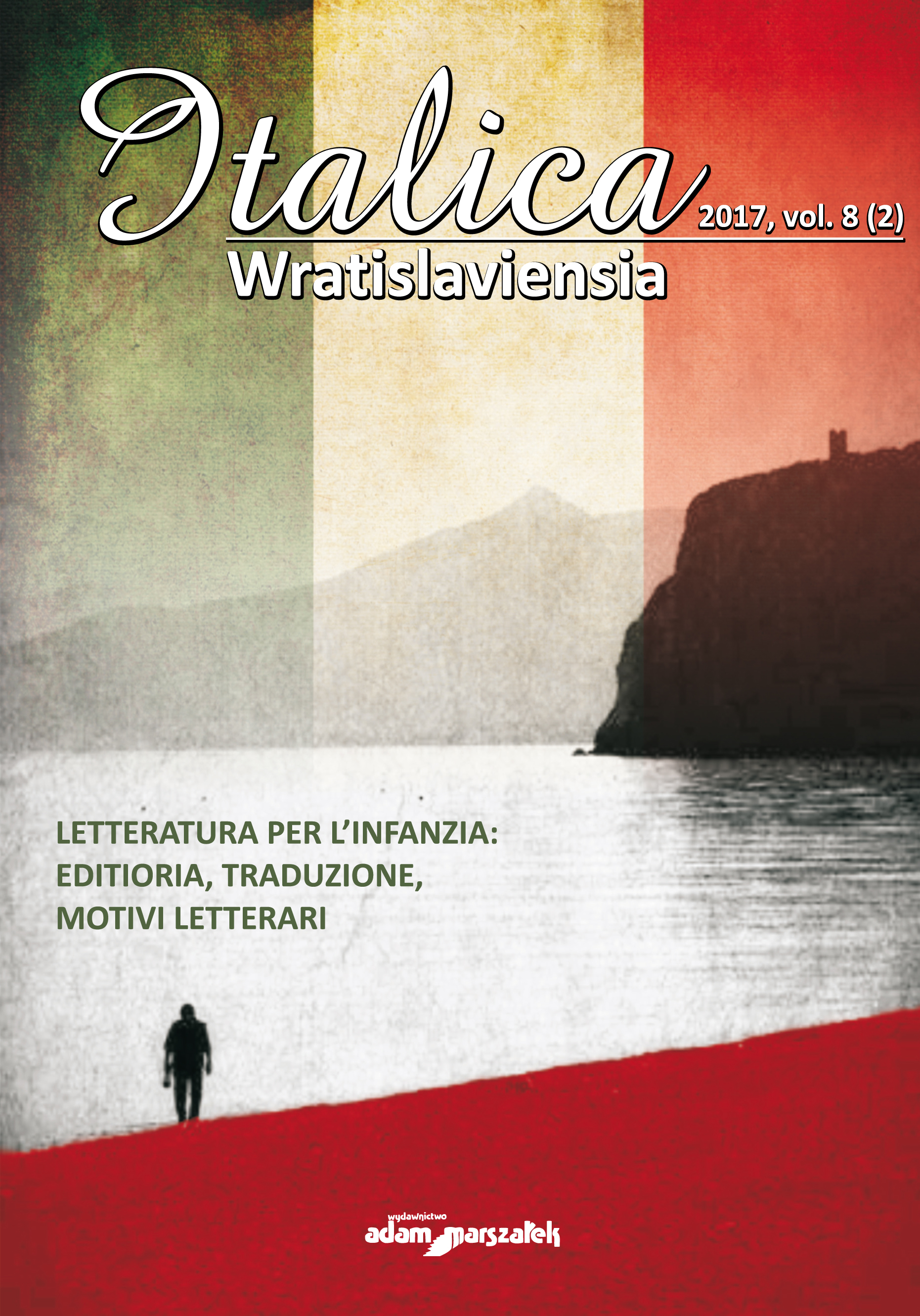L’affermarsi nell’Italia postunitaria di un nuovo genere editoriale: il caso di Cordelia
The Rise of a New Publishing Genre in Post-Risorgimento Italy: The Girls’ Magazine Cordelia
Author(s): Karin BloomSubject(s): Studies of Literature
Published by: Wydawnictwo Adam Marszałek
Keywords: Cordelia; periodical studies; De Gubernatis; Baccini; Jolanda
Summary/Abstract: Questo articolo propone come oggetto di studio un periodico per ragazze, fondatoa Firenze nel 1881 per volontà di Angelo De Gubernatis, che ne fu anche primo direttore, oltre cheeditore. Cordelia, così si intitola la rivista, si presenta come un contributo all’educazione delle suegiovani lettrici e al momento della fondazione è soltanto una delle molteplici iniziative educativenel campo dell’editoria per l’infanzia di fine Ottocento. Tuttavia, a differenza di molte altre testatedall’effimera esistenza, Cordelia spiccherà per la sua longevità e diventerà l’emblema di un genereeditoriale specifico, quello dei periodici per ragazze. Ripercorrendo la storia editoriale della rivistanel periodo 1881–1917, questo contributo intende mettere in luce alcuni dei fattori che sono statiritenuti importanti per l’insolito successo di Cordelia. Facendo riferimento soprattutto agli studi svoltinell’ambito dei periodical studies sugli aspetti caratterizzanti del periodico, si vuole indagare il modoin cui i direttori e gli editori della rivista hanno sfruttato la forma seriale ed eterogenea di questogenere editoriale. Lo studio ha rivelato come, dopo lo scarso interesse suscitato all’inizio, la rivistaabbia via via raggiunto un pubblico più grande durante la direzione di Ida Baccini e, successivamente,di Maria Maiocchi Plattis, meglio conosciuta con lo pseudonimo Jolanda. Questo fatto è ascrivibile siaalla struttura che le due direttrici impongono ai fascicoli, sia al rapporto che instaurano con le proprielettrici. Da ciò si è dedotto che le due direttrici che sono succedute al primo direttore hanno saputoadeguare la rivista ai gusti del pubblico, dimostrando una maggiore consapevolezza delle potenzialitàlegate alla forma caratteristica del periodico e dell’importanza del proprio ruolo come direttrici. This article proposes as its research object a girls’ periodical, Cordelia, founded in Florencein 1881 by publisher and first editor-in-chief Angelo De Gubernatis. Cordelia presented itself asa contribution to the education of its young female readers and, at the moment of its foundation, it wasonly one of many educational ventures in the publishing industry for children’s literature at the endof the 19 th century. However, unlike many other more ephemeral periodicals, Cordelia would standout for its longevity and become emblematic for a certain publishing genre, that of girls’ periodicals.While retracing the years 1881–1917 in the magazine’s history, this article intends to shed lighton some of the factors considered important for Cordelia’s extraordinary success. By referring toprevious research within the field of periodical studies on the particular characteristics of periodicalpublications, the article examines the ways in which editors and publishers took advantage of theserial and heterogeneous form of this publishing genre. This study has shown that the magazine,despite its meagre success in its first years of publishing, reached a wider audience over time duringthe editorship of Ida Baccini and, later, that of Maria Maiocchi Plattis, better known by her pen name,Jolanda. This later success can be attributed to the ability of these two editors to create a recognisableproduct as well as to the relationship that they managed to establish with their young readers. Fromthis, it can be inferred that Baccini and Jolanda succeeded in adapting the magazine to the readers’taste and, by doing so, they showed a greater comprehension of the potential of the periodical’scharacteristics and of the importance of their own roles as chief editors.
Journal: Italica Wratislaviensia
- Issue Year: 8/2017
- Issue No: 2
- Page Range: 37-52
- Page Count: 16
- Language: Italian

